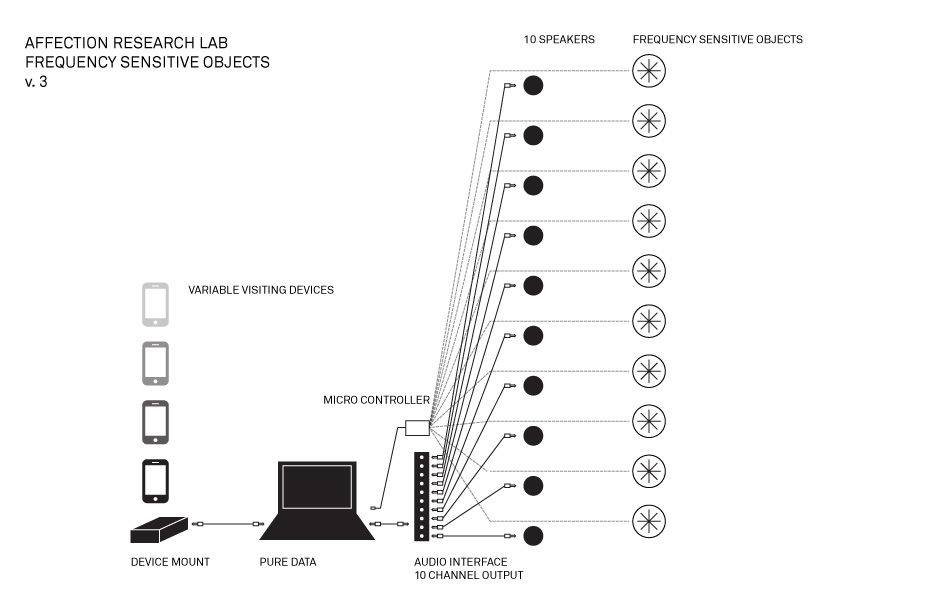The methods by which our contemporary devices and our future technologies communicate with one another occurs in a layer of reality which is beyond our perceptual means: the electromagnetic spectrum. We are not capable of perceiving this layer, nor are we meant to understand its workings — its ever-omni-presence is taken for granted. Nonetheless, the layer is there, waiting for us to pick up a device and utilize it. Therefore, our only understanding of this infrastructure is based on our experiences at the surface of these devices which defines how, where, and when we have that access. Affection Stations materialize this intangible layer — making it physical, exposed, open to affective interpretative effects — an immersive intimate experience which alters the perception of our contemporary tools of communication from objective functional objects into subjective affective artifacts.
Affection Stations instigate a paradigm shift on the relationships we have with our electronic devices, by transcoding their imperceptible nature into our perceptual level of reality — becoming visible, physical, and tangible. The Stations incite the designing of electronic residuals, being productive with it, designing incidental sound, designing noise. They are for the public. They are a means to poetically inform our generation and of those to come, of the materiality of our time. They are a means to express the possibilities of new relationships with our devices — a shift on how they are constructed physically and computationally. They embrace the inevitable electromagnetic spectrum, and poetically unveil a realm for design to take hold. They allow us to accept the notion that our devices are more organic and unique than we believe, and proposes a new level of digital transparency which may inform the social development and interactions between humans and computers.
The pure nature of sound is affective, and when coupled with the complex attributes of noise becomes disruptively communicative. The seemingly organic nature of noise transitions from a source of affection to a method of leveraging a humans innate sense of bestowing the notion of life in inanimate objects and spaces; the notion of life, meaning: intention, behavior, and motivations. Situated in the realm of Human-Computer Interaction, affective or emotional computing are typically sought after as a by-product, overly saturated as sensation, or literally illustrated. Affection Research Lab attempts to leverage a user’s imagination to provoke two sides of animism: from the user’s perspective and from the device’s. The Affection Research Lab with the Affection Stations and The Signal Archive create opportunities for animism to transpire through the affective resource of sound.
4.1 PRIMARY STATIONS The primary stations transcode a devices incidental sound into simple modes of representation: sound, light, and kinetics (movement). Aside from the Sound Station, the development of every station (primary and secondary) utilizes the frequency sensitive object formula:

4.2 SECONDARY STATIONS The Secondary Stations delve deeper off the end of animism, and employs methods of myth-making and narrative to develop idiosyncratic modes of interaction. 8 The secondary stations use the timeless human act of storytelling to transpire and develop what the primary stations could speculatively afford in the future. The secondary stations seek to expose the birth of new rituals and human behaviors.